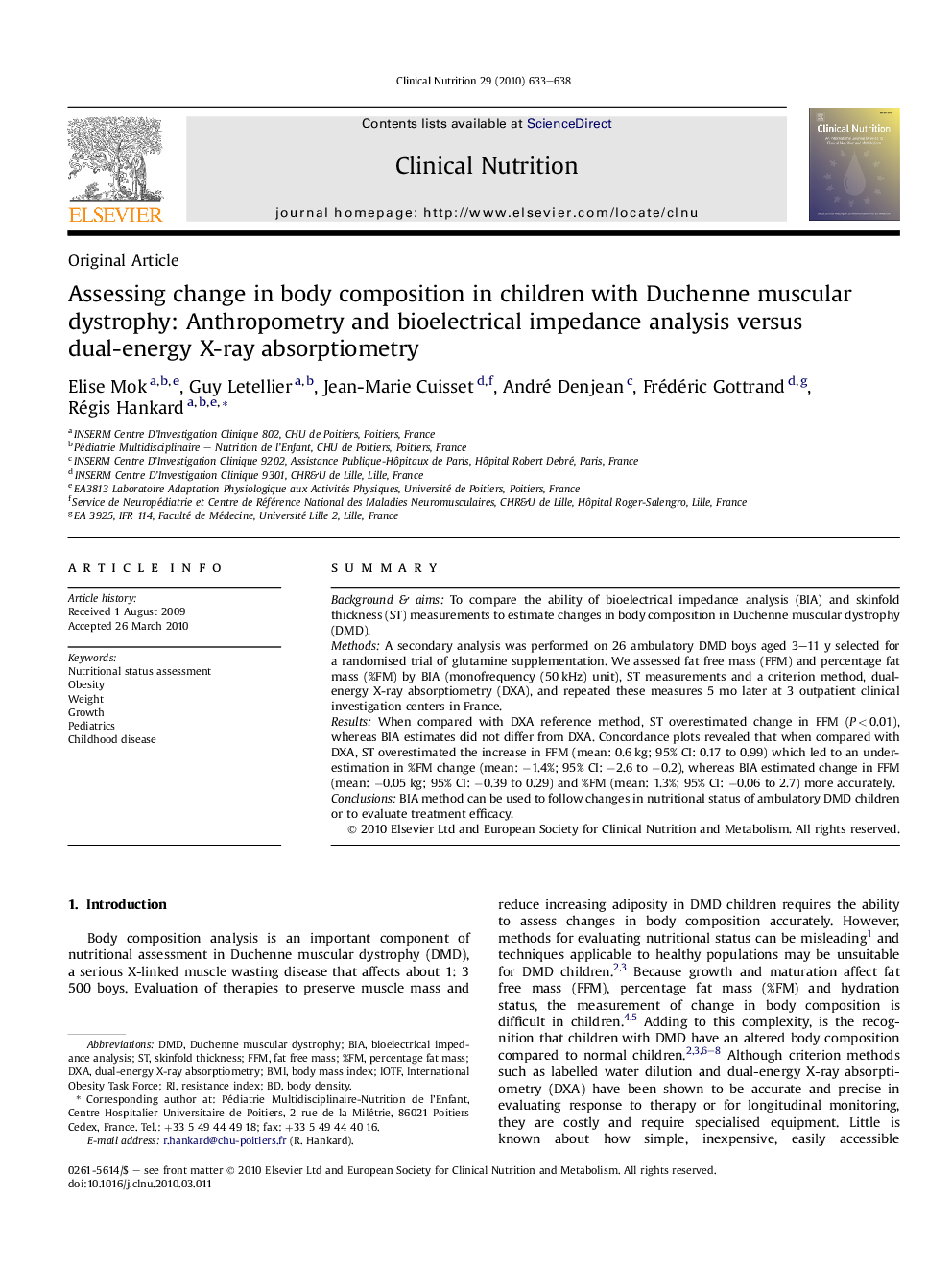| Article ID | Journal | Published Year | Pages | File Type |
|---|---|---|---|---|
| 2688486 | Clinical Nutrition | 2010 | 6 Pages |
SummaryBackground & aimsTo compare the ability of bioelectrical impedance analysis (BIA) and skinfold thickness (ST) measurements to estimate changes in body composition in Duchenne muscular dystrophy (DMD).MethodsA secondary analysis was performed on 26 ambulatory DMD boys aged 3–11 y selected for a randomised trial of glutamine supplementation. We assessed fat free mass (FFM) and percentage fat mass (%FM) by BIA (monofrequency (50 kHz) unit), ST measurements and a criterion method, dual-energy X-ray absorptiometry (DXA), and repeated these measures 5 mo later at 3 outpatient clinical investigation centers in France.ResultsWhen compared with DXA reference method, ST overestimated change in FFM (P < 0.01), whereas BIA estimates did not differ from DXA. Concordance plots revealed that when compared with DXA, ST overestimated the increase in FFM (mean: 0.6 kg; 95% CI: 0.17 to 0.99) which led to an underestimation in %FM change (mean: −1.4%; 95% CI: −2.6 to −0.2), whereas BIA estimated change in FFM (mean: −0.05 kg; 95% CI: −0.39 to 0.29) and %FM (mean: 1.3%; 95% CI: −0.06 to 2.7) more accurately.ConclusionsBIA method can be used to follow changes in nutritional status of ambulatory DMD children or to evaluate treatment efficacy.
